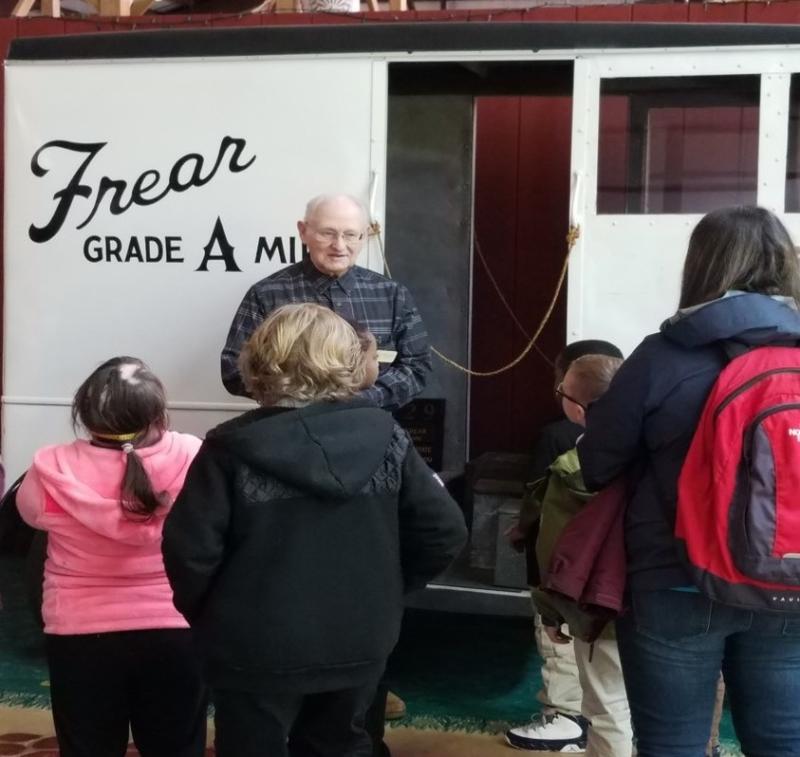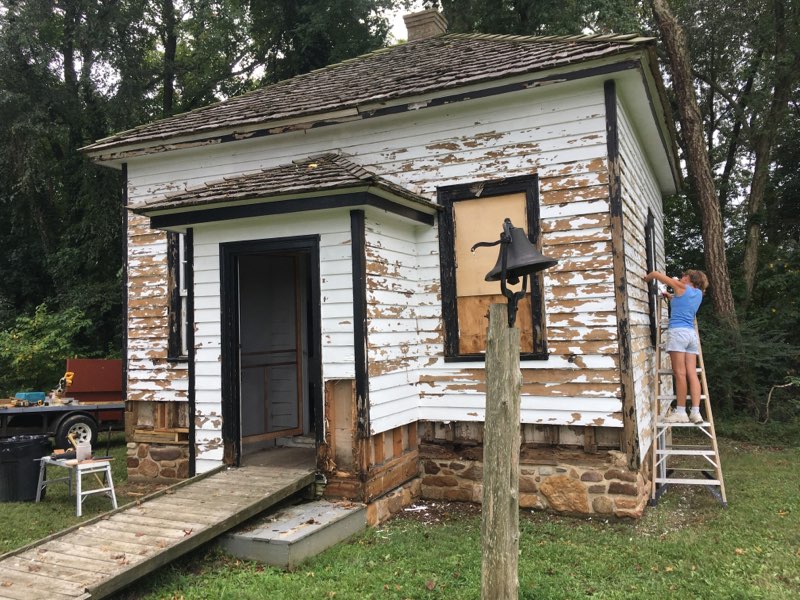The Delaware Agricultural Museum and Village recently paid tribute to the generosity of longtime educator and volunteer Arthur Gene Carlisle with a large bronze plaque honoring his second $25,000 sponsorship of a historic building in the museum’s beloved rural Delaware village.
Situated on five serene acres fronting Silver Lake, the museum village presents a snapshot in time, depicting life in a rural Delaware community from approximately 1890 through the 1960s. Village buildings include a school, farmhouse, church, gristmill, general store, train station, blacksmith/wheelwright shop, barn and several period outbuildings. Over the past four years, funding support from the Crystal Trust and the State of Delaware enabled the phased restoration of all the village buildings, returning them to their authentic period appearance.
The large-scale restoration project not only allowed the ag museum to preserve these special symbols of Delaware history, but also created a learning environment for adults and children. Each building, along with the history behind it, helps exemplify the story of Delaware agriculture and life in the state’s rural communities. Together, they illustrate the many ways agrarian life has evolved over time.
Carlisle specified that his generous gift be used for the upkeep of the museum’s one-room schoolhouse (ca. 1850), originally located on Mill Lane in Middletown. As an educator for 30 years, Carlisle finds special significance in the school. He began his teaching career in a small school in his hometown of Greenwood, where the same students remained in his homeroom for five years, progressing from eighth to 12th grade. He provided instruction in seven subjects including math, science, literature and geography. Carlisle served as each student’s advisor, since there were no counselors at the small school.
The Mill Lane School is typical of the one-room schoolhouses that dotted the state in the mid- to late 1800s. At any given time, as many as 22 students, ranging in age from 5 to 18, received personalized instruction from a single teacher in a room no larger than 20-by-20-feet. Students were separated by gender, with boys one side of the room and girls on the other. They were then separated into rows based on ability. Younger students sat up front and older students near the back. Females often received a better education than males, because older boys typically attended school only during the winter months. They were needed to help on their family farms in the spring and fall.
During the 19th and early 20th centuries, teachers in rural America were mostly female. As young as age 16, they could receive their teaching credentials at normal schools, the precursors to teachers’ colleges. This meant that, at times, the teacher was not much older, or could even be younger, than some of the students in their class. In instances where teachers were not from the local community, farm families often would take turns keeping them in their homes. Although poorly paid, many young women became teachers in the 19th century because of the independence teaching provided, enabling them to work outside the home for the first time. For most, however, this newfound independence was short-lived. Once they married, as most did, females were not allowed to teach school.
By the late 1920s, life in Delaware’s rural communities had begun to change. Advances in transportation made possible by the automobile and improved road systems enabled a more mobile population. The closure of most one-room schoolhouses in favor of larger consolidated schools was among many changes happening during this time in the state’s history.
To learn more, go to agriculturalmuseum.org.






















































